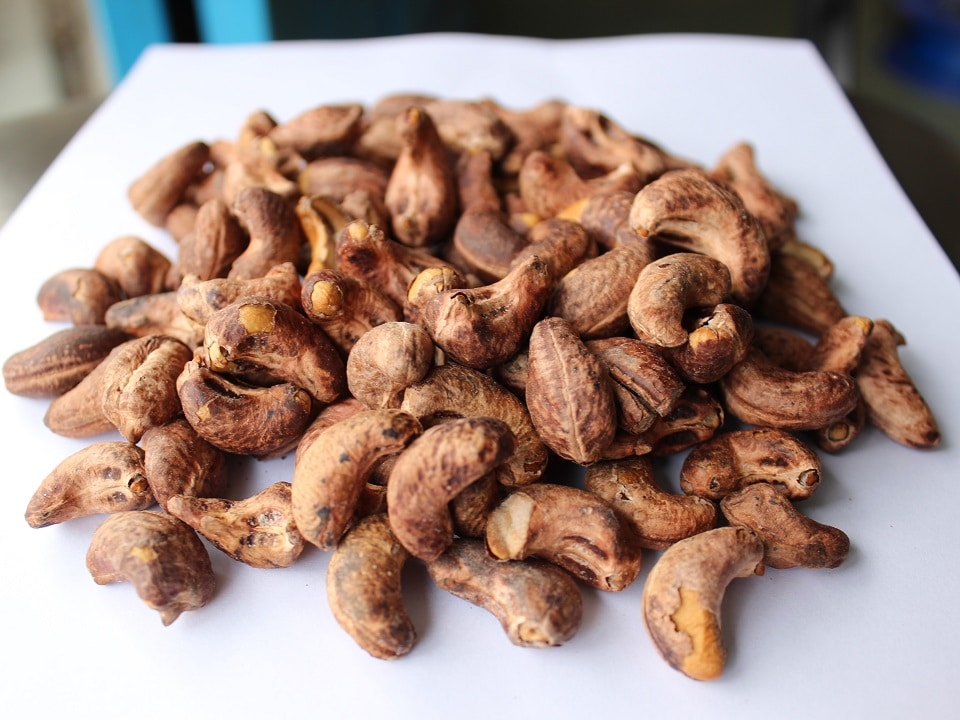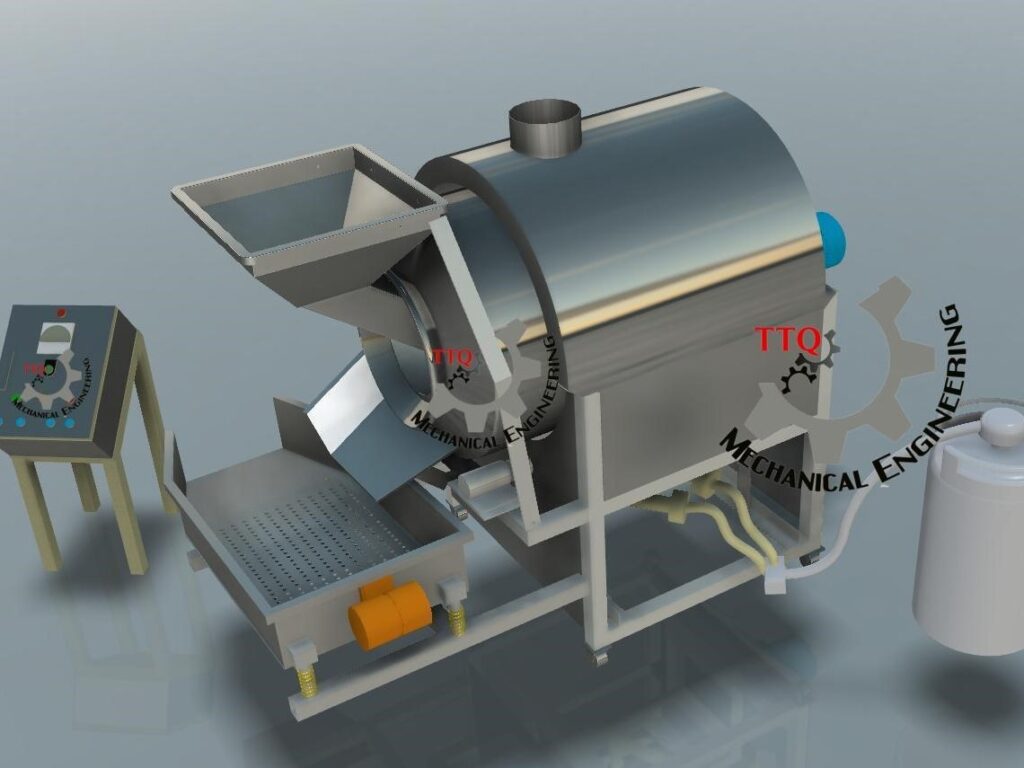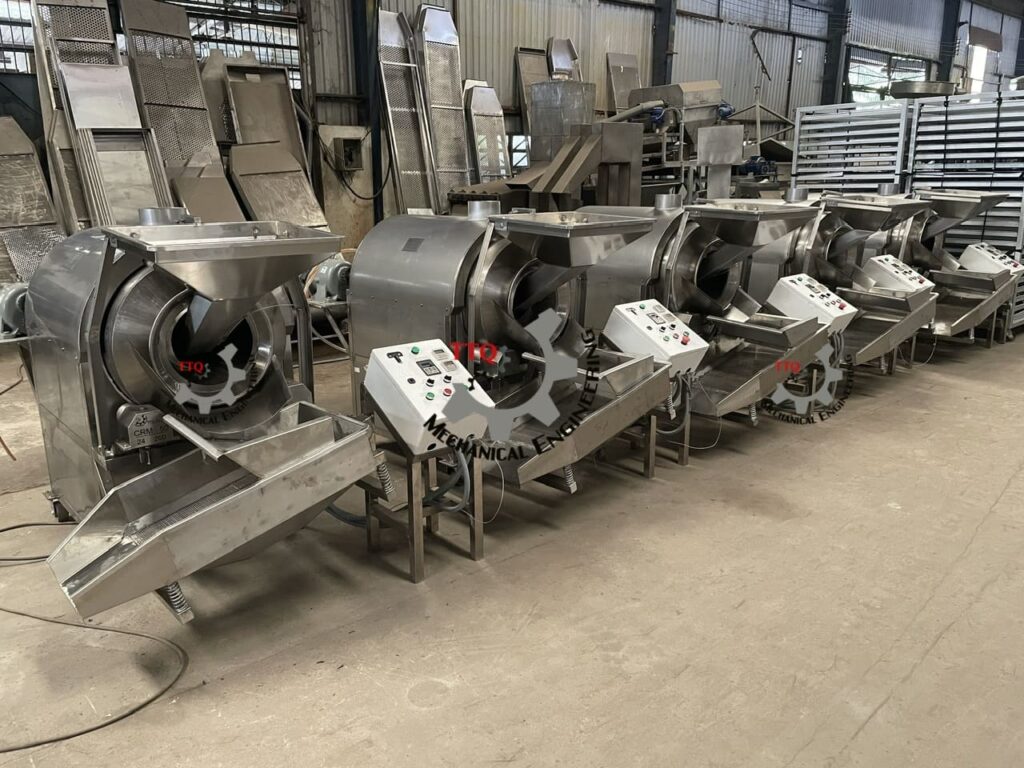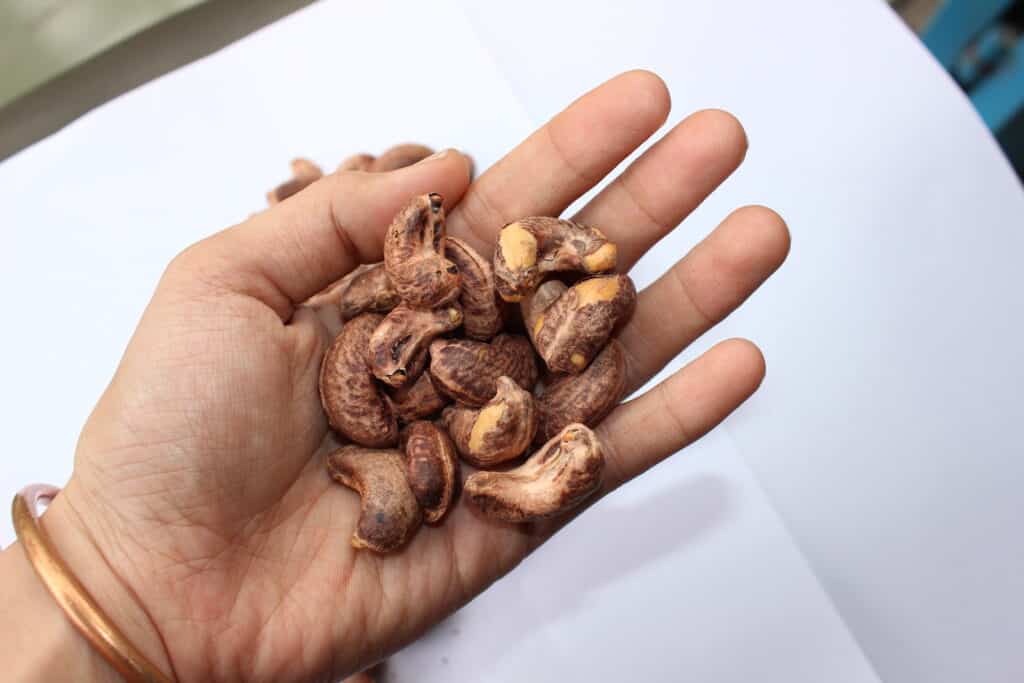How to Roast Cashews: Complete Cashew Roasting Process – Your Guide to Better Roasted Cashew
Cashews have a delicate flavor that becomes more pronounced when roasted. The roasting process enhances the sweet, buttery, and nutty notes of the cashew through browning reactions and caramelization of the natural sugars. Gently heating the nuts brings out their aromatic oils, intensifying the overall cashew taste that is subtly delicious on its own.

Choosing the Right Equipment for Roasted Cashews.
To achieve an even roast, having the right equipment makes a difference. Ovens or professional roasting machines allow maintaining precise temperature control, but thick-bottomed pans on the stove-top also work. The nuts should be spread out in a single layer rather than piled up. Metal pans conduct heat more evenly than glass. Digital thermometers help monitor the interior nut temperature. Wire racks or perforated pans that promote air circulation roast faster than solid trays. Oiling the pans minimizes sticking but needs to be done lightly to avoid greasiness.

Step-by-Step Guide to Roasting Cashews
The first step is selecting raw cashews that are properly dried and have moisture content below 5%. Any pieces, splits or defective nuts should be removed. Keep the batch size optimal for the pan or oven so that the nuts are not crowded. Preheat the equipment to 180-190°F which is ideal for bringing out the flavors without burning the nuts. For stove-top roasting, use medium-low heat settings to gradually warm the pan through before adding nuts.
Once the cashews are layered out in the pre-heated equipment, roast by carefully stirring or shaking the pan every few minutes. This rotates the nuts for even exposure to the heat. Depending on whether a light, medium or dark roast is preferred, they need to be roasted for 8-15 minutes. Check frequently as they can quickly transition from golden brown through reddish tones when the sugars caramelize. Roast only up to the point where the cashews split slightly and white steam escapes. Immediately remove them from the heat source once done.
Visually, properly roasted cashews transition to a reddish brown color. Their surface skin flakes off easily when rubbed between the fingers. Drawing close, you will notice an enticing, nutty aroma when the oils are released during the roasting. Listening closely, light crackling sounds can be heard as well in the final stages. All these sensory signals combined indicate nicely roasted cashews ready for consumption.
After removal from the roasting equipment, nuts need to be spread on trays or racks to allow air circulation for quick cooling. This stops the cooking process so they do not get overdone. Cashews can then be selected for breaks, chips and irregularities which impacts taste and presentation. Store the roasted nuts in airtight containers to retain maximum crispy texture and prevent moisture absorption during storage.
Commercial Roasting with Batch Drum Roasters
Batch type drum roasters are commonly used for commercial production volumes of roasted cashews. In these machines, the metal drum rotates and tumbles the cashew batches while exposing them to adjustable heating mechanisms. Often heat is provided through gas flame burners heating the exterior drum surface.
The drums have varying holding capacities ranging from 20-100 pounds of nuts per batch. The continuous tumbling ensures uniform roasting. These industrial drums are generally made of stainless steel and digitally controlled for setting target temperatures and roast durations. Automated mechanisms unload the finished roasted cashews once a batch cycle completes.
Key benefits of batch drum roasters include their high productivity rate, consistency between batches and labor reduction compared to manual roasting. Their enclosed approach also helps collect any cashew oils released during the process. The closed drum shape allows rapid heat transfer improving energy efficiency as well. The batch quantities, flame heat intensity and cycle times can be customized to achieve light, medium or dark roasts as per requirements. These versatile industrial cashew roasters produce large volumes demanded commercially.

INSTRUCTIONS ON HOW TO SOAK CASHEWS IN WATER
I. Preparation steps
- Materials: Cashew kernels after shelling (Cut off the hard shell): 15 – 18 kg
- Water tank 450 * 470 (Tap water): 02 pieces
- Round hole with handle for cashew kernels Type 360* H 400 ( 40 L): 01 Pcs
- Stainless steel tray with hole Kt : 900 500 40 : 03 pieces
II. Steps Soak
- Step 01 :
- Put cashews in the basket: 15 – 18 kg
- Put water in the tank 01 : 08 – 10 Liters
- Put granulated salt into a bucket with water: 50 – 60 g (about 3 teaspoons)
Then stir well in the water, Continue to put the plastic basket with cashews soaked in water (The water has just flooded about 03 cm)
- Use rubber gloves to stir the cashew kernels in the basket, avoiding breakage. Can stir 01 – 02 times
Soaking time: About 20-30 minutes (Depending on the weather)
- Step 02 :
- Take the basket out of the Box 02
- Divide the soaked cashew into 03 trays, keep in a cool and dry place
- Cooling time: 18 – 24 h
- Step 03 :
- Put in the roaster, After the cashew has dried. Avoid things that are still wet and will stick to salt after roasting
- Read carefully how to operate the machine before roasting.

GUIDE OF OPERATION OF CASHEW ROASTING MACHINE
I. Preparatory steps for roasting process
- Power supply: 1 phase, 220 V
- Industrial gas cylinders 48 kg (Or 12 kg tank)
- Grain roaster.
- Dry salt.
- Products of roasted seeds.
- Trays after roasting. (Usually made of bamboo knit)
- Trays store salt after roasting. (Usually aluminum, or stainless steel)
II. Steps of operation in the roasting process
- Turn ON power the machine.
- Press Start the roaster. (Adjustable Volum Rotation Speed 50% barrel capacity)
- Open the Gas Level Valve from the gas tank.
- Turn the rotary Switch ON the Regulator Panel, power supply for the Gas Burners
(Electromagnetic Valve automatically opens gas, and Ignition Switch ON automatically).
- Put the salt in the roasting machine through the funnel. (The salt content of 150 – 200% of the weight of the product to be roasted )
- Wait for the heat meter to display the temperature at 135 – 150 oC.
- Put the product should be roasted through the funnel. (From 05 to 20 kg)
- At this time the heat meter drops to 70 – 120 oC (Depending on the moisture content of the product)
- The best roasting time (from 10 to 20 minutes), at that time check continuously to see the color of the product
- When the color is desired (Frequency from 135 to 150 oC). Press the Pause button. And press Start output the control Panel button.
- Press Start the vibrating motor of the salt separator using a rotary switch ON the panel.
- Adjustable Volum Rotation Cycle 90% power (For faster output)
- Finish the roasting process, we have the product is crunchy, color as desired..
- Salt is reused for roasting (usually salt is used repeatedly 06 – 07 times)..
- Maintenance, cleaning machine after each shift..
Nutritional Value and Health Benefits of Roasted Cashews
Cashews, whether raw or roasted, are a nutritional powerhouse packed with healthy fats, protein, fiber, vitamins and minerals. A one-ounce (28g) serving of roasted cashews contains:
- 157 calories
- 12g total fat (2g saturated fat)
- 5g protein
- 9g carbohydrates
- 1g fiber
- 1.7mg iron (10% DV)
- 83mg magnesium (20% DV)
- 168mg phosphorus (15% DV)
- 187mg potassium (4% DV)
- 7mg zinc (45% DV)
The healthy unsaturated fats in cashews can help lower harmful LDL cholesterol and are heart protective. The magnesium supports bone health, while the iron carries oxygen in the body. Zinc boosts immunity and healing. Though relatively high in calories, the fiber, protein and healthy fats in cashews increase satiety so a small serving size satisfies.
Roasting does minimally decrease water soluble vitamins like B-complex and C compared to raw. However, it increases antioxidant activity from browning reactions creating higher phenolic compounds. Roasted cashews also have slightly more fat and calories as moisture is driven off and they absorb a bit of oil during roasting. Overall though, the nutritional differences are small and roasted cashews still provide ample health benefits to enjoy in moderation as part of a balanced diet.
Creative Ways to Use and Enjoy Roasted Cashews
Roasted cashews are incredibly versatile for both sweet and savory applications. They can be enjoyed on their own as a satisfying snack, but also pair well with dried fruits, granolas and trail mixes. Chop them to top salads, oatmeal, parfaits, ice cream or baked goods. They can also be ground into a creamy nut butter to spread on toast or fruit, thicken smoothies, or use in dips, dressings and sauces.
On the savory side, roasted cashews add buttery crunch to stir-fries, curries, pilafs and veggie sides. Crush them as a gluten-free coating for chicken, fish or tofu. Finely chopped or ground cashews can thicken soups and stews. Their rich flavor complements herbs and spices in many global cuisines from Asian to Indian to African. For entertaining, simply combine roasted cashews with aromatic rosemary, spicy cayenne or zesty citrus peel and toast for an quick appetizer or cocktail nibble.
Whether incorporated into recipes or simply eaten out of hand, roasted cashews lend delectable flavor and nutrients to brighten any dish or occasion. With the proper technique and a bit of creativity, these little nuts open up a world of culinary possibilities.
How to roast peanuts
How to roast sunflower seeds
How to roast almonds
How to roast pistachios
How to roast nuts
Keywords: cashews, roast, roast cashews, roasting cashews, method, roasting method, baking tray, cashews evenly, cashew fruit, production line, roasted cashew, nuts roaster, air fryer , salted roasted , fryer, toasted, bake, how to roast, cooking, sesame, oven recipe
